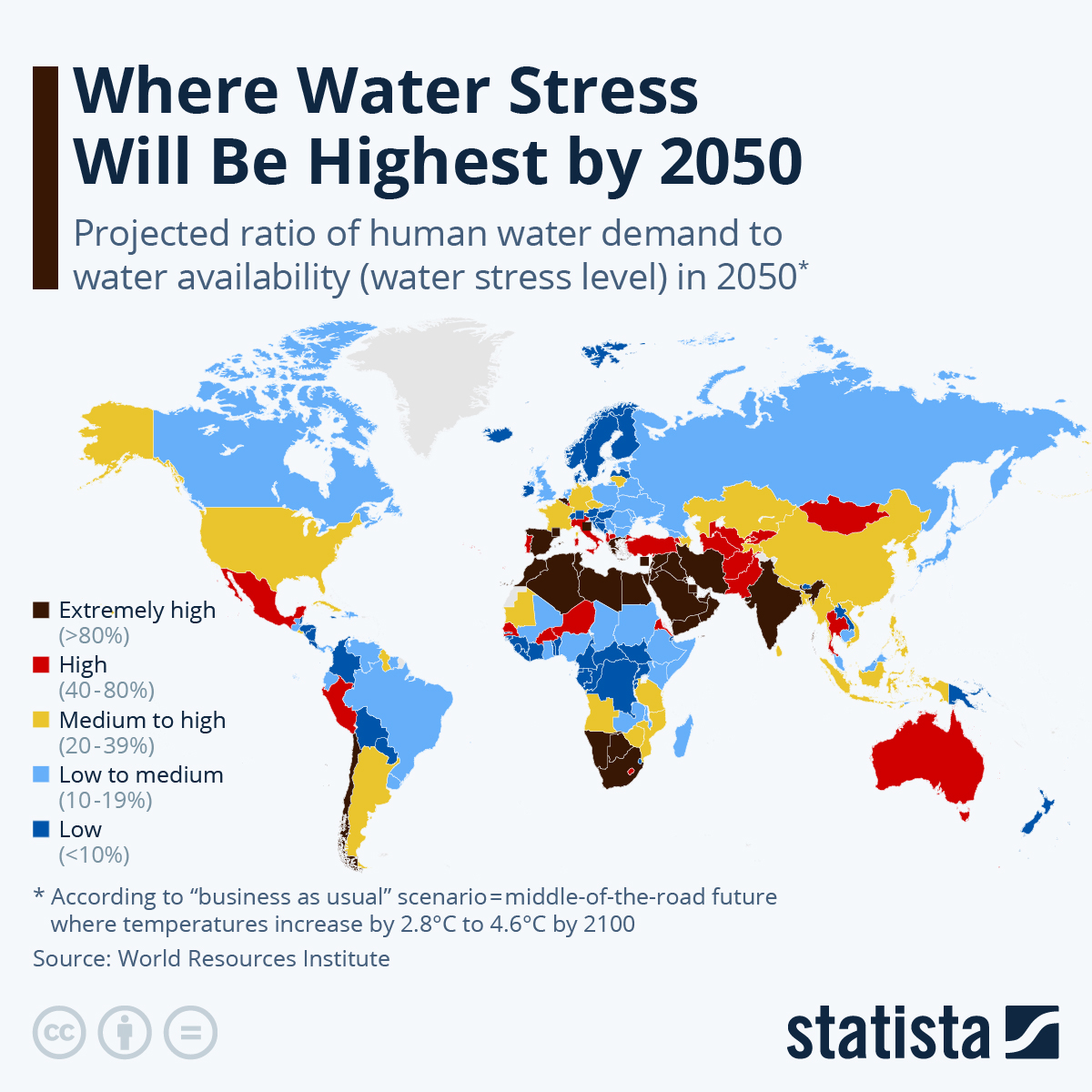Water is a vital resource, and its management is crucial for the well-being of communities across the United States. The average American uses 82 gallons of water at home each day, highlighting our deep reliance on this precious resource (EPA, 2023). Accurate water monitoring is essential to ensure efficient management of water resources. This article explores the importance of water monitoring, the current state of water in the U.S., advancements in monitoring techniques, real-world impacts, and the future of water management.
The State of Water in the U.S.
The United States faces several water-related challenges, including pollution, scarcity, and aging infrastructure. According to the Environmental Protection Agency (EPA), approximately 40% of the nation’s rivers and 46% of lakes are in poor biological condition, underscoring the urgent need for comprehensive monitoring and management strategies (EPA, 2016). Regional variations in water issues are significant, with the arid Southwest experiencing severe water scarcity, while the Great Lakes region deals with pollution and invasive species.
At Rain Harvesting Connect, we understand these challenges and offer solutions that can help mitigate water scarcity issues through efficient rainwater collection and management systems.

Image from : Statista
The Science of Water Monitoring
Monitoring Technique
Water monitoring has evolved significantly over the years. Today, a range of advanced techniques are used:
- Real-time sensors: These can detect water inflow and outflow as well as contaminants in parts per billion, providing immediate data on water conditions (Research Dive, 2023).
- Satellite imaging: Allows for large-scale assessment of water bodies and detection of issues like algal blooms (Cyient, 2023).
- DNA analysis: Identifies microbial communities in water ecosystems, providing insights into ecosystem health (Cyient, 2023).
- Artificial intelligence (AI): AI algorithms analyze data from multiple sources to predict water trends and detect anomalies (Research Dive, 2023).
Real-World Impacts of Accurate Monitoring
Case Study: Flint, Michigan Water Crisis
The Flint water crisis, which began in 2014, starkly illustrated the importance of accurate water monitoring. The city changed its water source without proper testing and treatment, leading to widespread contamination and affecting thousands of residents (Pieper et al., 2018). This event underscored the need for rigorous and transparent water monitoring practices.
Success Story: Milwaukee, Wisconsin
Milwaukee implemented an advanced real-time monitoring system, reducing water main breaks by 40% and saving millions of gallons of water annually. This success story demonstrates how robust water monitoring can drive positive change and improve resource management.
Economic Implications
Accurate water monitoring has significant economic implications. Agriculture, which accounts for 80% of the nation’s consumptive water use, relies on accurate water data to optimize irrigation and reduce waste (USGS, 2023). Many industries depend on water quality for their operations. Monitoring also helps prevent unnecessary water loss, ultimately reducing costs for municipalities and businesses (APHA, 2023).
Rain Harvesting™ Connect Products: Enabling Smarter Water Management
Rain Harvesting Connect offers cutting-edge water monitoring solutions that enhance efficiency and optimize resource management. Our advanced products integrate seamlessly with modern water systems to provide real-time insights and improve water conservation efforts.

Smart Tank Monitors
Our Tank Level Monitors utilize pressure sensors to track water levels in storage tanks. These devices provide:
- Accurate level measurements to within 1cm.
- Customizable alerts for low levels or unusual usage patterns.
- Historical data tracking for usage analysis and trend forecasting.

Rain Gauges
Our Rain Gauges provide precise measurements of rainfall on a property, allowing users to:
- Compare rainfall data across multiple locations.
- Optimize irrigation and rainwater collection systems.
- Receive alerts for heavy rain events to manage overflow risks.

Dam and Reservoir Level Gauges
Our Dam and Reservoir Level Gauges are designed for open water bodies, ensuring consistent monitoring and efficient water usage. Key benefits include:
- Continuous level monitoring to prevent overflows and shortages.
- Real-time alerts on water levels for proactive decision-making.

Trough Monitors for Livestock Management
Designed for agricultural applications, our Trough Monitors ensure livestock have consistent access to water. These devices help:
- Prevent water shortages in troughs.
- Reduce water wastage through real-time tracking.
By integrating our solutions into water management strategies, businesses, municipalities, and homeowners can ensure reliable, data-driven decision-making for improved water security.
The Future of Water Management
Predictive Modeling and AI
Predictive modeling and AI are revolutionizing water monitoring, allowing for the forecasting of water-related challenges and opportunities. These technologies enable more informed decision-making and proactive management of water resources (Research Dive, 2023).
Accurate water monitoring is vital for managing water resources efficiently. As we face the dual challenges of climate change and growing demand, our ability to understand and manage our water resources will be critical for our well-being. Investing in water monitoring technologies and infrastructure, including rainwater harvesting systems, is essential for securing our future and ensuring water availability.
Visit Our Website
To learn more about how Rain Harvesting™ Connect can contribute to better water management in your community, click the button below.
References
- American Public Health Association (APHA). (2023). Drinking water and public health in the United States.
- Cyient. (2023). Advances in remote sensing technologies for monitoring river water quality.
- Environmental Protection Agency (EPA). (2016). National Rivers and Streams Assessment 2008-2009: A Collaborative Survey. EPA/841/R-16/007.
- Environmental Protection Agency (EPA). (2023). Water use statistics.
- Ongley, E. D. (2000). Water quality management: design, financing, and efficiency considerations-II. Invited presentation at the World Bank’s Water Week Conference: Towards a Strategy for Managing Water Quality Management, April 3-4, 2000, Washington, D.C.
- Pieper, K. J., Tang, M., & Edwards, M. A. (2018). Flint water crisis caused by interrupted corrosion control: Investigating “ground zero” home. Environmental Science & Technology, 51(4), 2007-2014.
- Research Dive. (2023). Recent trends and innovations in the water quality instrument industry.
- United States Geological Survey (USGS). (2023). Water use in the United States.
